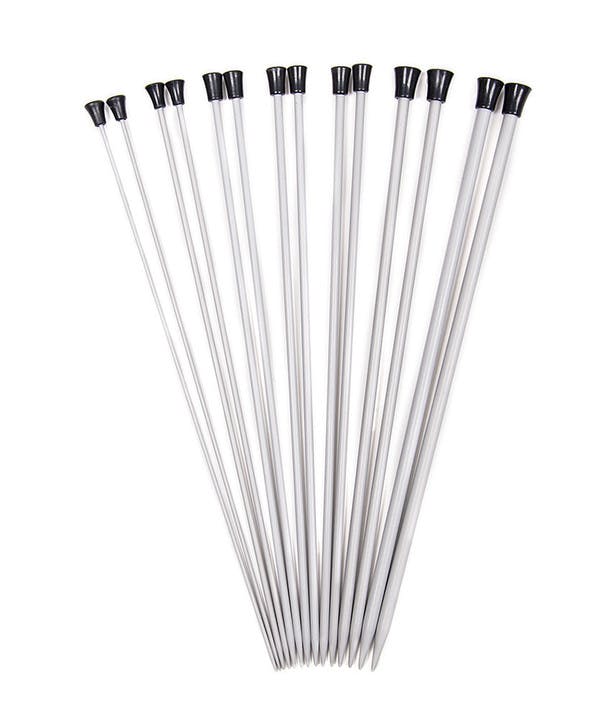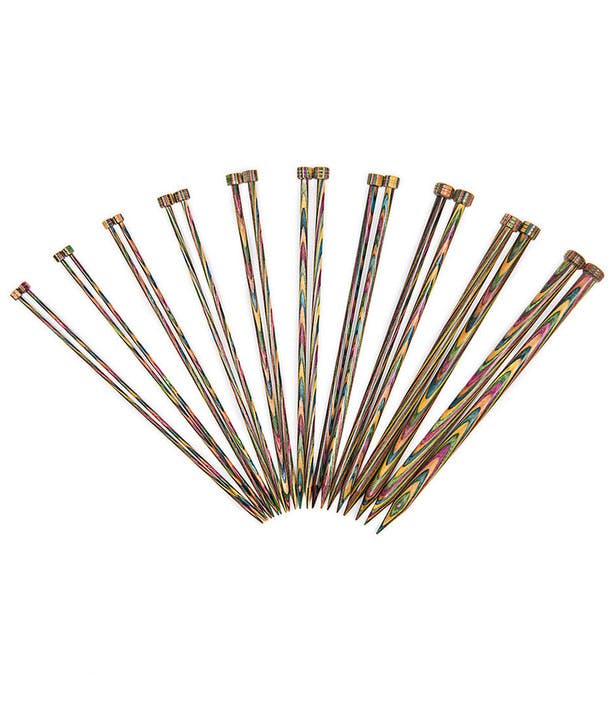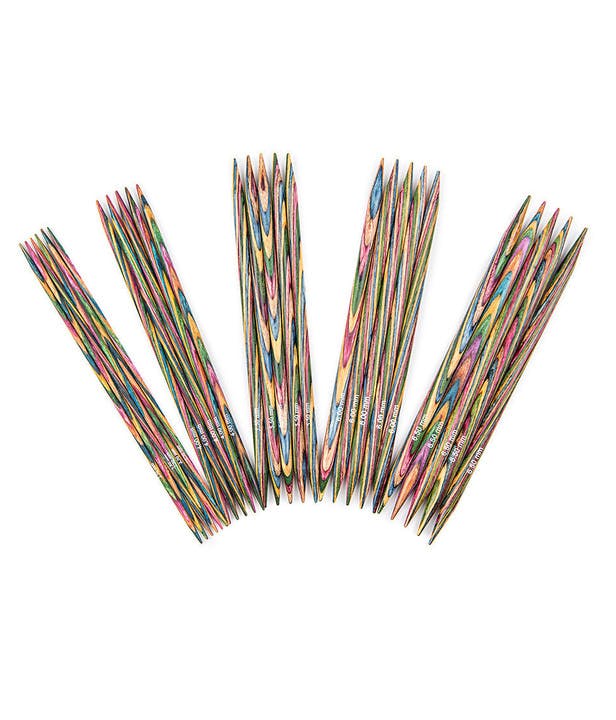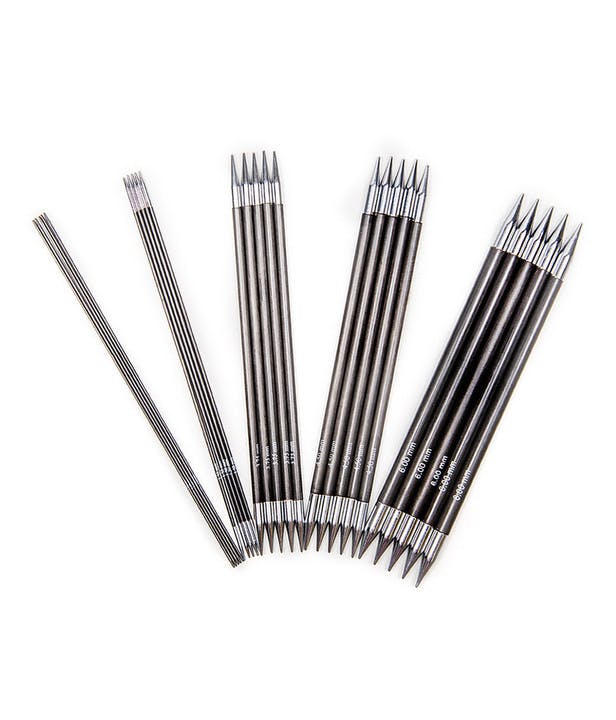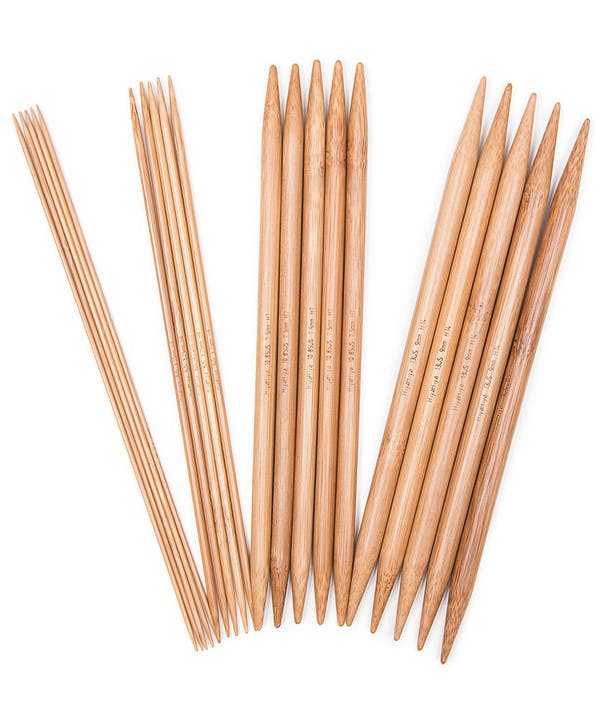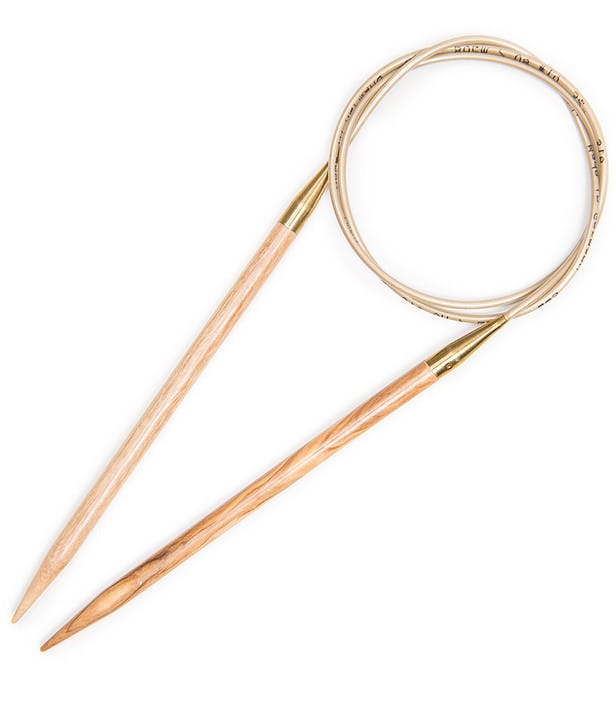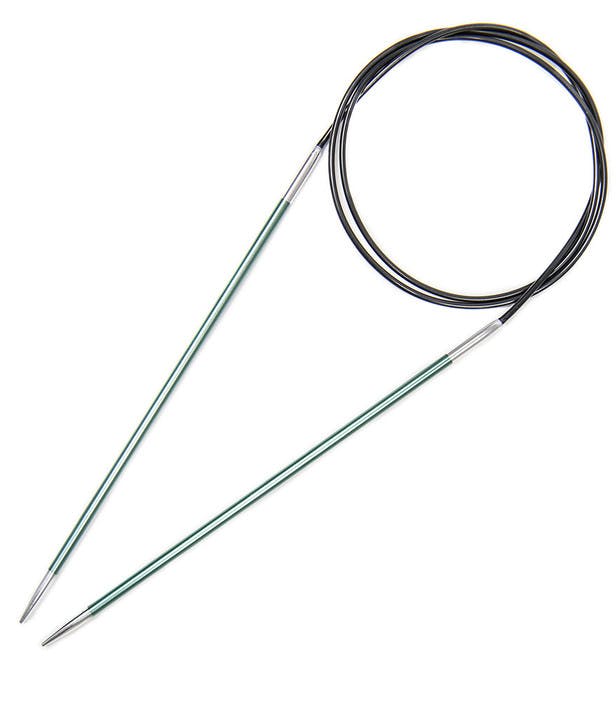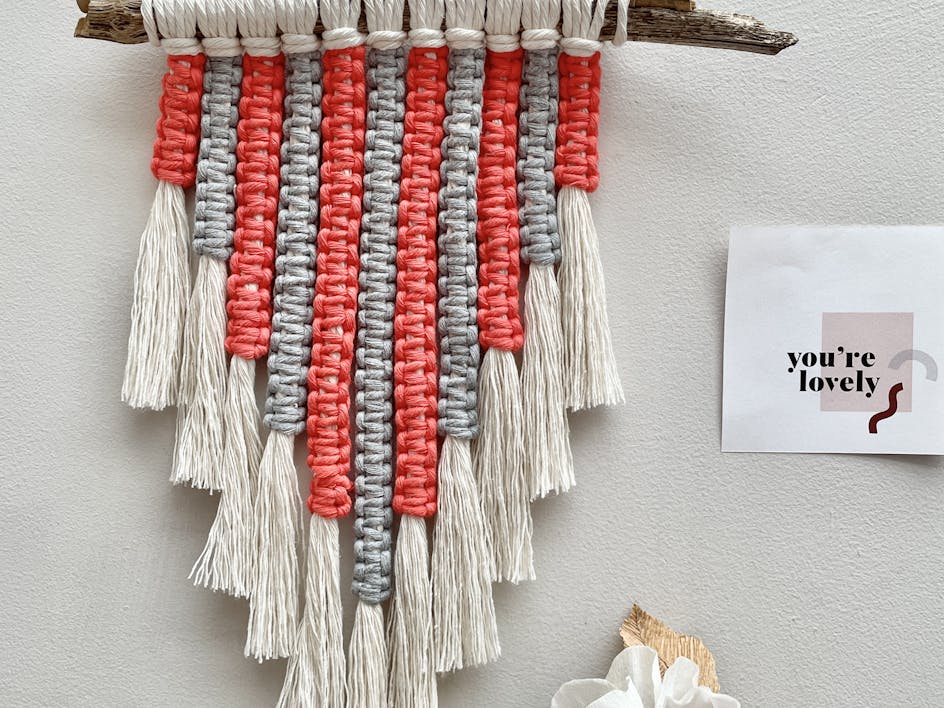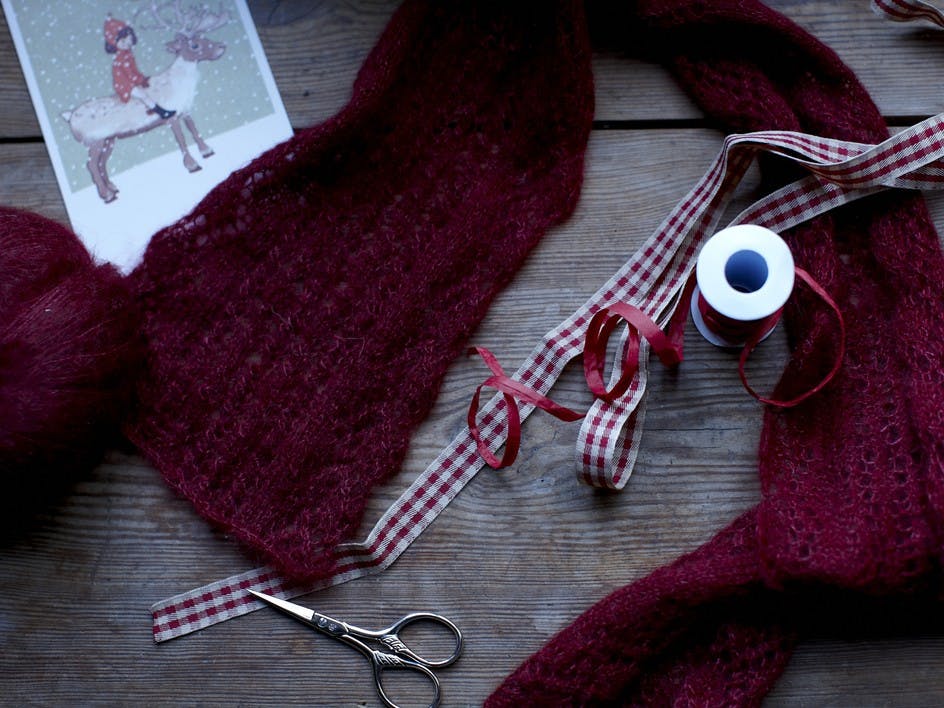Your ultimate guide to knitting needles
Published on April 25, 2019 By Elizabeth Bagwell 4 min read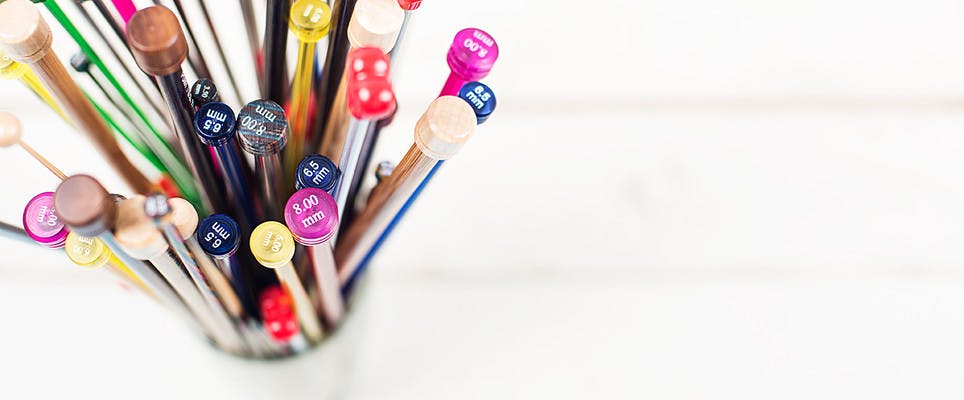
If you’re new to knitting or have always stuck with your straight metal pins, read on – there are so many types of needles to try now, and Elizabeth Bagwell is here to guide you through the maze.
The two main features of a knitting needle are type and material. Deep in history, needles were double-pointed, straight, long (for sweaters) or short (for socks) and made of wood or bone. Today, you can get needles in almost any material, from milk to glass, and there are lots more types to try. Today we'll be exploring the many different types of needles and when to use them.
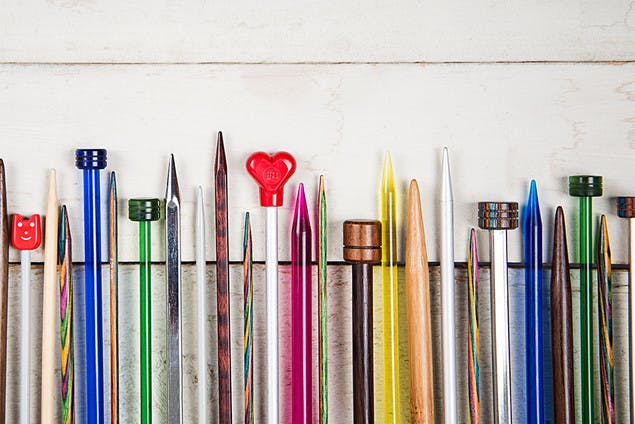
Single point needles (or straight needles)
Probably the first pair you ever had were straight needles. With a point at one end and a knob to stop the stitches falling off at the other, they’re the needles in almost every modern knitting picture and cartoon. Most commonly made of metal (up to about 5mm in size) and then hollow plastic (larger sizes), they’re also available in wood, bamboo, and other materials. They’re usually the most affordable option.
The standard length is about 35cm, which is their limiting factor: you can’t easily knit something large (like a full blanket) on straight needles, as the yarn gets heavy and the stitches cramped. Short needles (around 15cm) are often marketed as ‘for kids’ but are great for small projects on the go.
Get straight to the point with these needles
Double pointed needles (DPNs)
Typically short (10-20cm), DPNs are most commonly used for knitting small items in the round, such as socks, hats and gloves. As a result, they’re easiest to find in small sizes (2-4mm) but our collection goes up to 8mm (great for chunky hats or sweater sleeves). There’s been an explosion of brands making DPNs in recent years, so you’ll spot nickel, steel and other metals, as well as wood, bamboo and plastic. They come in sets of 4, 5 or occasionally 6. You need a minimum of 4 to knit comfortably in the round, but some people prefer 5, so try to get a set of 5 for your first DPNs.
Double pointed needles to get you started
Fixed circular needles
Two matching needle tips, joined with a flexible plastic cable. The stitches sit on the cable, which lets you knit easily in the round. They’re also great for making larger projects, like a blanket, as the weight of the yarn rests in your lap, not at the end of your needle.
Cables range from about 30cm to 150cm long. Thin, flexible cables are easiest to use, and a smooth join between cable and needle is essential. The cable length should be shorter than the project you’re making, i.e. if you’re making a sweater for a 100cm chest, use an 80cm cable.
Our top circular needle round-up
Interchangeable needles
A brilliant invention, and the most compact way of storing needles. Interchangeables are circular needles where the tips come off and can be swapped around. This means that instead of needing a 5mm needle with a 40cm cable (for hats) and one with an 80cm cable (for that sweater) and then the same again in 4.5mm (for the rib on each) you can buy one pair of 4.5mm tips, one pair of 5mm tips, one 40cm cable and one 80cm cable and mix and match as required. End stops can be used to hold the stitches on the cable, even if you remove the needle tips for another project – a great boon for the multi-project knitter.
Switch it up with these interchangeable needles
Cable needles
Strictly an accessory, these are often sold in the needle section and some look just like DPNs. They’re designed to hold the stitches as you cross your cables. Ones with a kink work better than straight ones, and try to get a set of multiple sizes.
Ideally, you want your cable needle to be close in size to your main needles, otherwise they tend to not fit (too large) or slip out (too small) leaving your stitches hanging.
Be cable-able with these cable needles
Every knitter has a (usually strong) preference for the needles they use. While I know lots of clever knitters who make wonderful things on straight pins, I love my interchangeable circular needles. I’ve built up quite a collection, mostly metal, some wood, and use them for everything, from baby hats to blankets.
That said, I do prefer DPNs to interchangeable circular needles for one thing – socks!
